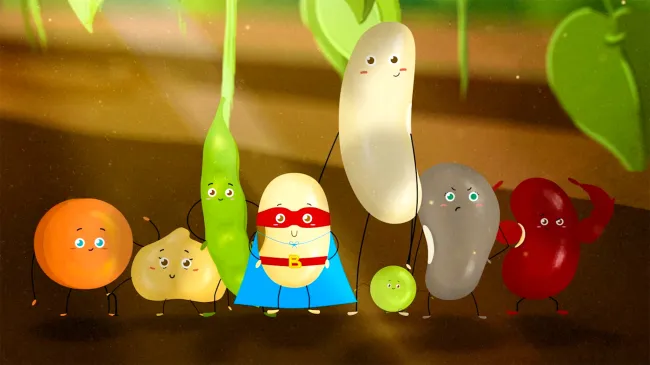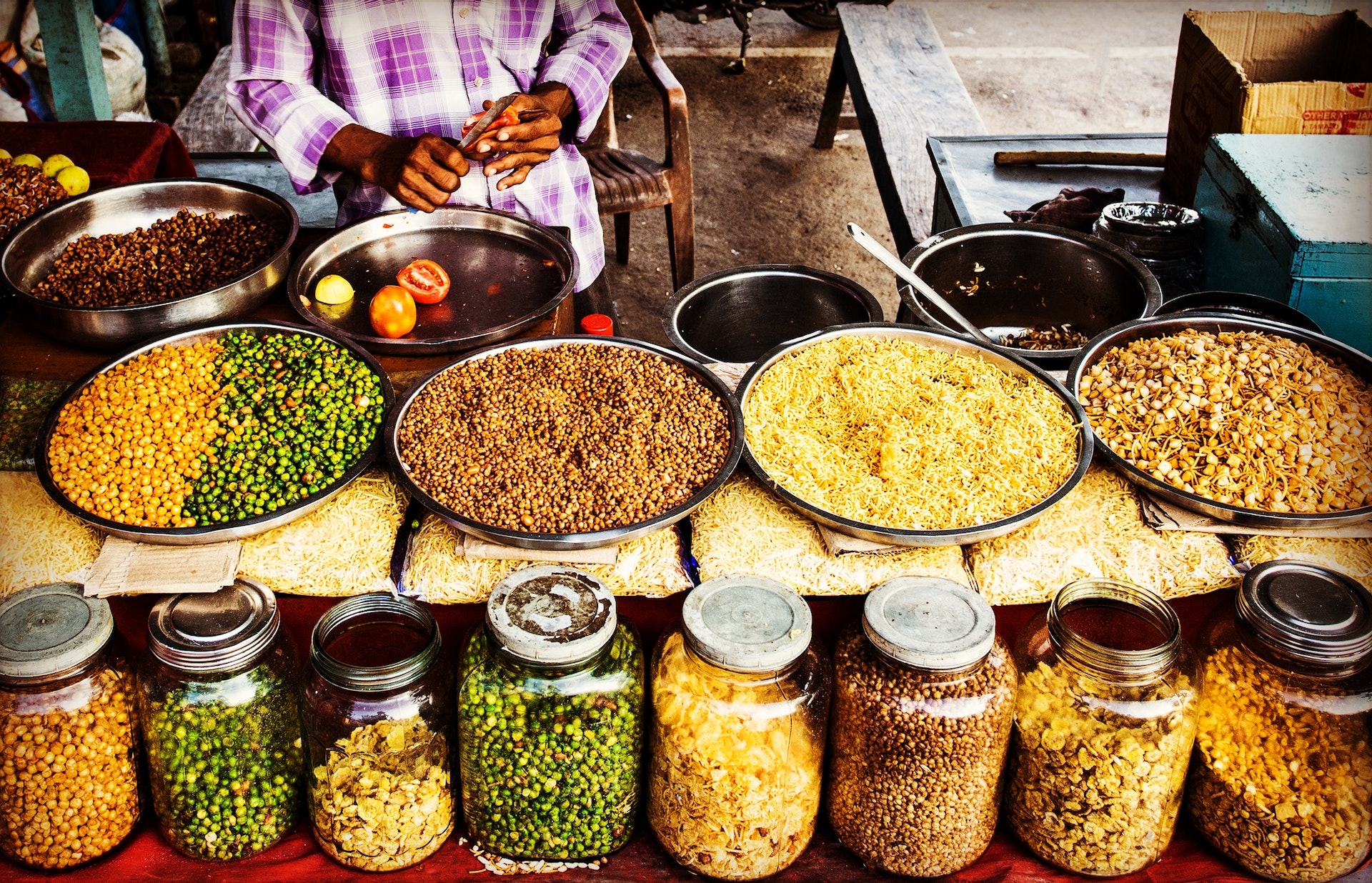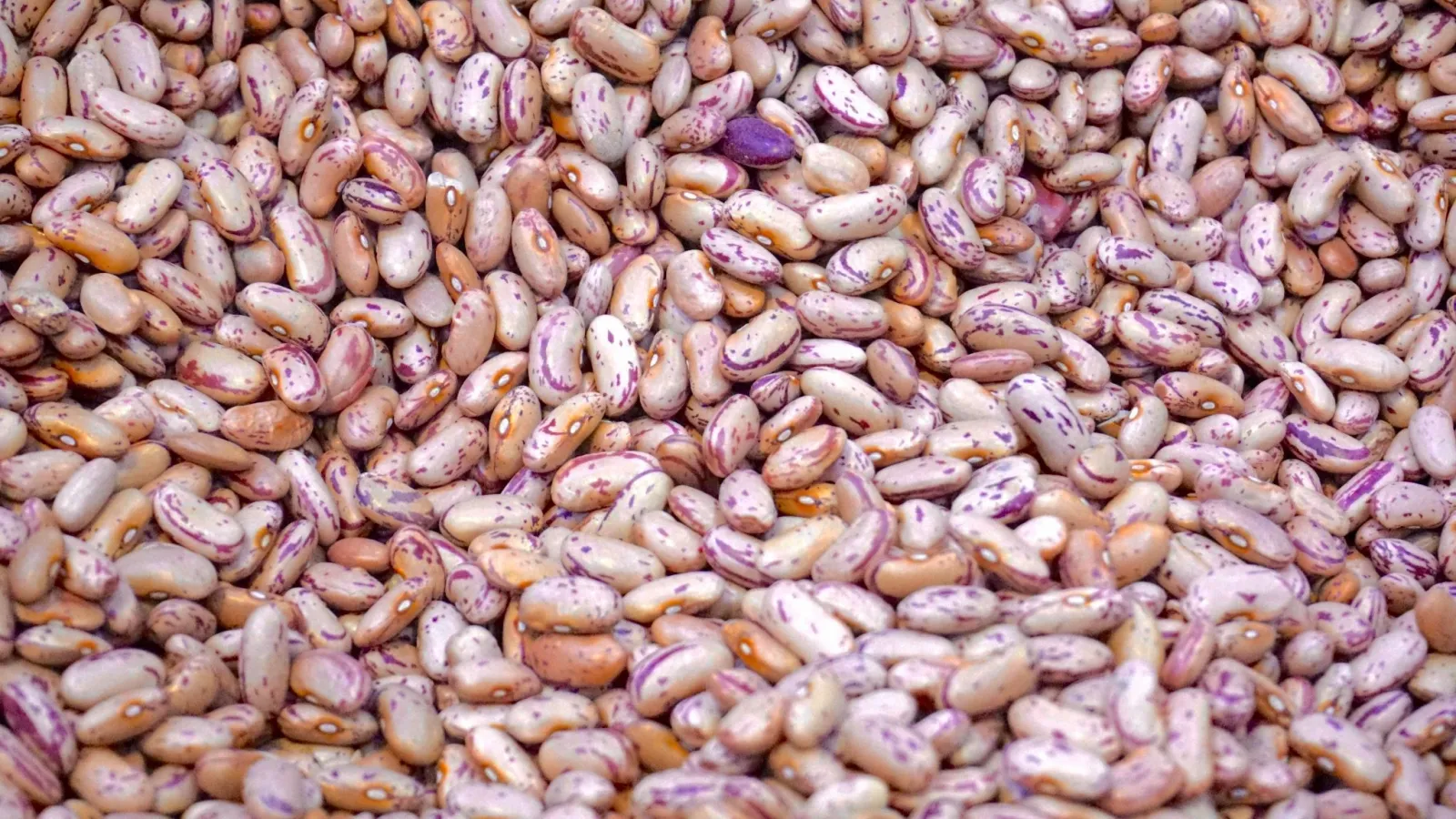The humble bean is taking up more room in research agendas and consumer consciousness, called upon as a valuable tool in modern challenges from climate change and malnutrition to the rising cost of living. TABLE launches a new video in collaboration with BBC Ideas that asks, what is it about beans?

Baked, refried, mushy, split, in a stew, as a burger: beans appear on our plates in myriad forms and are a long-established staple of human diets. After a period of inattention, the humble bean is now taking up more room in research agendas and consumer consciousness, called upon as a valuable tool for addressing today’s challenges, from climate change and malnutrition to the rising cost of living.
"Could the answer to the world’s problems be the humble bean?"
TABLE is excited to launch a video collaboration with BBC Ideas that highlights just how beans might help solve our interconnected problems. The result of a BBC Ideas call put to the University of Oxford Social Sciences Division, our video was one of four selected from the 80 submissions. More information about the four videos produced from this call and the links to watch them can be found here.
What is it about beans?
The health and environmental benefits of beans, as well as their affordability, have given them a role in the various solutions proposed to the world’s climate, biodiversity, malnutrition and cost of living crises. The article Legume Dreams published by George Cusworth and colleagues reviewed how and where beans appear in different visions of a sustainable future. While the visions themselves are multiple and conflicting, three characteristics of beans captured attention across them all:
- Their nitrogen fixing capacity and therefore their role in soil fertility
- Their high protein content and therefore their contribution to sustainable diets
- Their historical role in the context of European food and farming, and in food cultures globally.
Nitrogen and the land
Leguminous plants, of which beans are an example, have the ability to biologically ‘fix’ their own nitrogen: bacteria in their roots transform atmospheric nitrogen into inorganic compounds that are then available to the plant and stored in the soil around its roots. This process not only provides nutrients for surrounding trees and plants in natural habitats, but acts as a natural fertiliser in agricultural systems. Beans are therefore less dependent on added fertilisers than many other crops and, as part of a crop rotation, can contribute to the nutrient requirements of other crops in the system.
"Beans are survivors, able to grow in a wide range of climates, from the broad beans of the UK to the adzuki of the Himalayas."
In a world of ever-increasing temperatures and growing pressure on water supplies, beans are hardy plants able to grow in a wide range of climates, on average requiring less water in their production than rice or wheat and significantly less, on average, than what is needed for meat production. If we ate less meat and more whole soy (like edamame and tofu), we would need to use a lot less land. Nearly 80% of soy produced in the Amazon is used to feed the animals that feed us, and demand for soy cake for animal feed has driven increasing soy production.

Clear glass jars and metal bowls full of colorful dried beans and peas sit on a table at a market in Bankok, Thailand. Photo by NEOSiAM 2021 via Pexels.
Beans and their protein
"In a world where 2 and half billion people are malnourished, beans are a nutritional all-rounder."
The comparatively high protein content in beans (relative to other plant foods) attracts significant attention in discussions that often foreground that macronutrient, particularly in relation to the role of meat and meat alternatives. Beans contain amino acids, the building blocks of protein, and are a particularly rich source of the amino acid lysine, which is often less present in other plant foods. While all beans contain a mix of essential amino acids, soybeans in particular have the best proportions of these for our health, making them virtually ‘complete’ protein sources. Legumes also tend to be low in fat and nutrient rich, and high in iron, zinc and fibre.
Beans in our cultural history
"Beans are a dietary staple of nearly every culture across the globe… boasting around 40,000 different varieties."
The historical presence of beans in food cultures and production systems across the world makes them a familiar option at a time of ongoing malnutrition and our cost of living crises.
That said, cultural associations can also be a hindrance. In some contexts beans have traditionally been associated with privation: a poverty food eaten by those who cannot afford animal-source foods, or bland fare chosen by people who renounce worldly pleasures for religious reasons. Enthusiastic adoption of bean-based diets may require creative reimagining to find meanings better suited to our time—either by transforming the beans themselves into different food products, or by working to change the story of beans without changing their substance.
Are beans the answer?
"Beans are certainly versatile and as adaptable as a Swiss Army knife - but they alone can’t be expected to fix all the ills of the world."
Clearly beans have many useful qualities and these can be deployed to support many different visions of a good food future. Some such visions are more tech-dependent, seeking to progress from the status quo by relying on monocultural production and the processing of commodity crops into foods for mass production. In these futures the advantage beans offer is that they are easily stored and can be traded far from the site of production, while crops like soy are well-suited to large-scale production. But there are entirely different visions on offer too: in these, beans form part of small scale ‘agroecological’ production systems and contribute to diets that tap into older cultural traditions characterised by the consumption of primarily unprocessed whole foods. Legumes’ nitrogen-fixing qualities are valuable in such low-input systems. In a world where conflict between envisioned solutions to our global problems often hinders adoption of any of them, it is valuable to find a consensus towards beans across these realities.
So, are beans the answer to everything? The answer is: of course not, because the food system is far too complex for any single food or technology to provide the solution. Regional contexts and climate, and complex dietary preferences and sensitivities are just some of the considerations to be thought through, and bean growing and eating won’t work in all situations. Nonetheless, their environmental, nutritional and cultural qualities, not to mention their tastiness, need to be explored and harnessed further.




Comments (0)